ekg
Latest
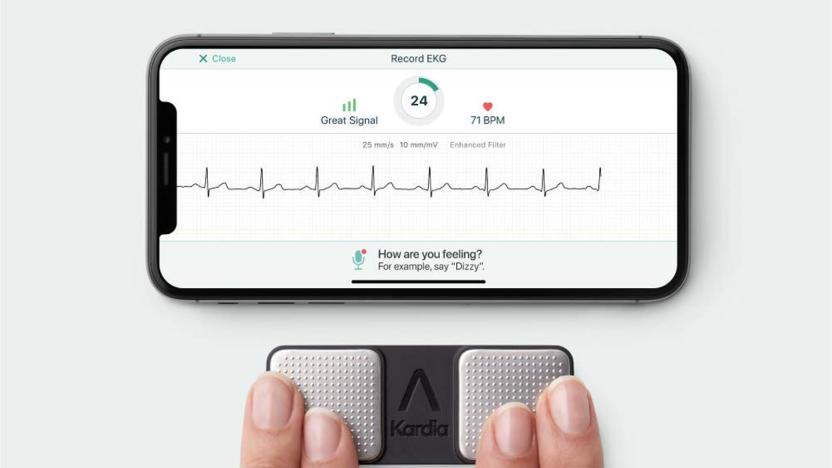
FDA clears first personal ECG device to detect three heart arrhythmias
To date, personal ECG devices have only really detected one kind of heart arrhythmia: atrial fibrillation. While that's helpful, it doesn't cover other conditions that could be just as dangerous. You might not be left wondering for much longer. AliveCor's KardiaMobile has received the first FDA clearance allowing a personal device to detect two other relatively common conditions, bradycardia (where your heart rate dips to 40-50BPM) and tachycardia (a jump to 100-140BPM). While these conditions are sometimes innocuous and might not show symptoms, they can also be representative of issues like heart disease.
Jon Fingas04.23.2019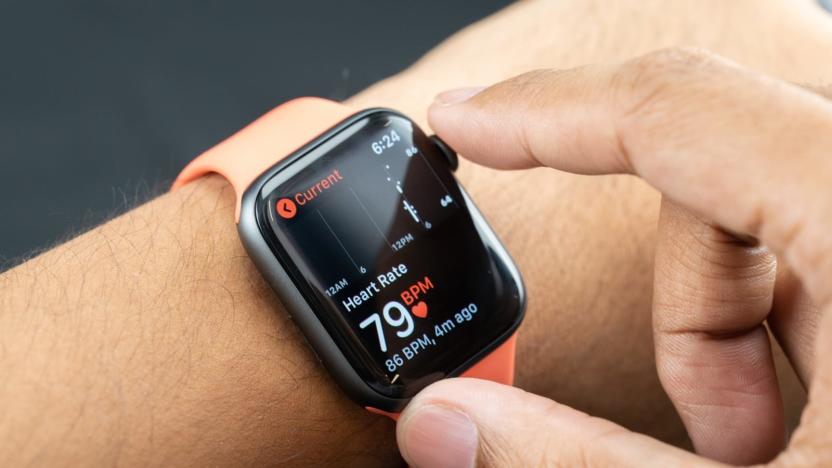
Recommended Reading: The smartwatch EKG
Smartwatches are changing the purpose of the EKG Andrew Bomback and Michelle Au, The Atlantic Devices like the Apple Watch and other wearables now offer access to an EKG on your wrist. What was once reserved for a hospital or doctor's office can now be worn every day. Well, a version of it at least. The Atlantic discusses the limits of the smartwatch EKG, including exactly how helpful it is for most people and what it can't tell you.
Billy Steele02.23.2019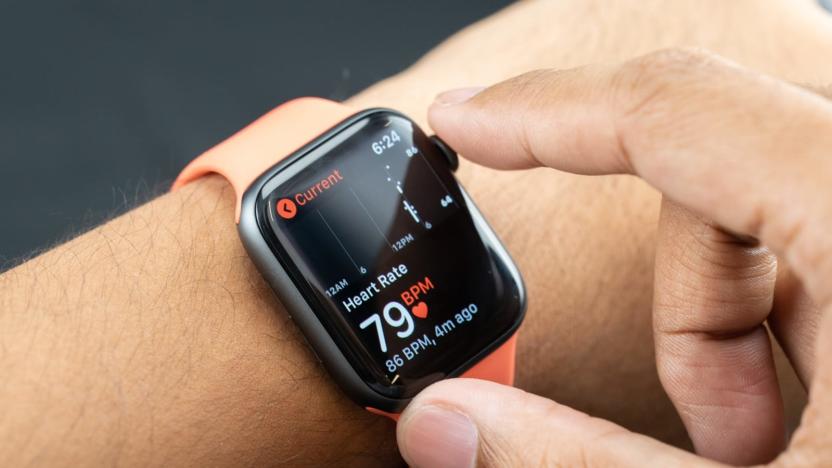
The next watchOS update will reportedly include the ECG app
One of the main features Apple announced for Apple Watch Series 4 was an electrocardiogram app, which could help you detect an irregular heart rhythm. While it wasn't included with the Watch Series 4 at release, nor in last month's watchOS update, it appears the app will arrive soon.
Kris Holt11.28.2018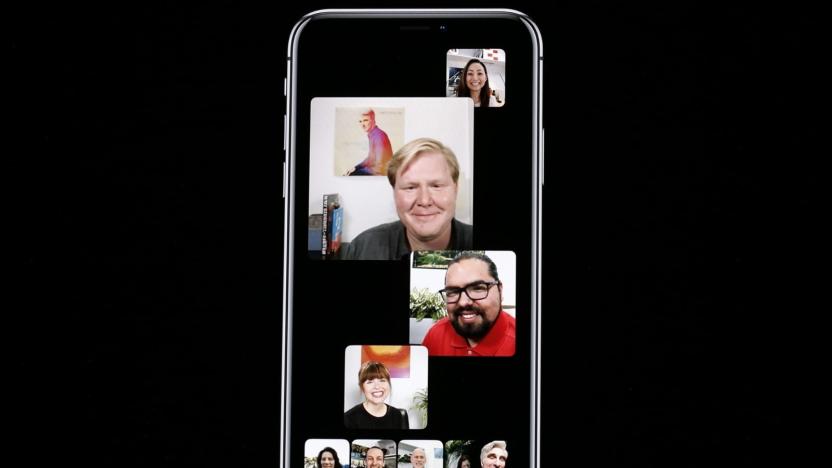
Apple releases iOS 12.1, watchOS 5.1 with Group FaceTime (updated)
Apple has released a smorgasbord of updates, and iOS 12.1 is just the start of them. Notably, you can now upgrade to watchOS 5.1 on Apple Watch Series 4 devices. It doesn't include the wearable's marquee ECG feature, unfortunately, but there are new solid-color watch faces and compatibility for features arriving on iOS and Mac, including Group FaceTime (audio only on the Apple Watch, of course) and more than 70 new emoji.
Jon Fingas10.30.2018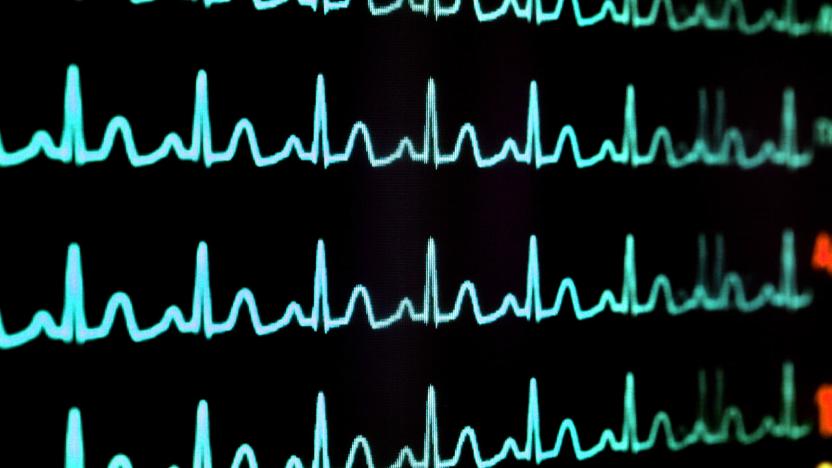
AliveCor wearables may detect unsafe potassium levels in the future
AliveCor is working on a new application for the technology behind its KardiaBand for Apple Watch. Last year, the FDA approved KardiaBand as a medical device, and it can record your heart rhythm and report on any rhythmic abnormalities that could be linked to dangerous health issues. Now, The Verge reports, AliveCor is developing a way for its technology to be used to detect high levels of potassium in the blood.
Mallory Locklear03.12.2018
Electronic skin can display a heartbeat on your hand
Electronic skins might not only detect health troubles in the near future, but display them for the world to see. University of Tokyo researchers have developed an e-skin that can measure vital signs like your heartbeat and display them in real time on a skin display. The design blends a breathable nanomesh electrode and stretchable wiring with an array of micro LEDs that can output basic images bending with your body. Others know right away if you need help -- they'd just have to look at your hand (or anywhere else the sensor works) to get an idea of what's wrong. The sensor can pair with a smartphone and transmit its info to the cloud, too.
Jon Fingas02.18.2018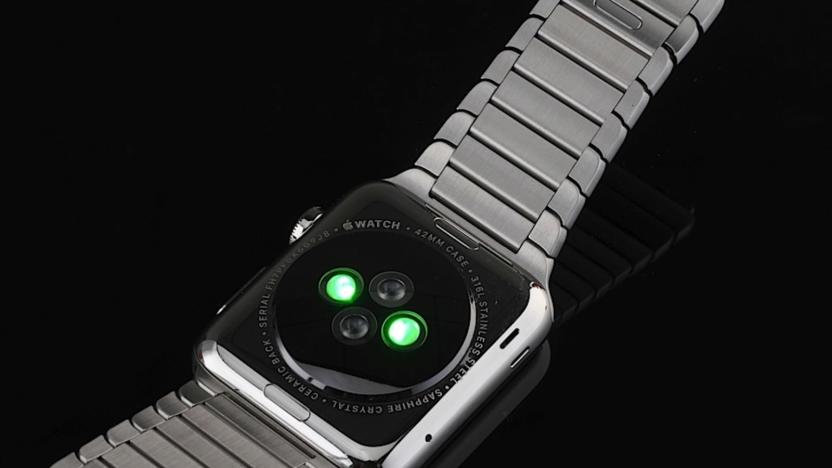
Future Apple Watch models could get EKG heart monitoring
We've already seen an EKG band for the Apple Watch, but now Apple is reportedly working on bringing the feature directly into its smartwatch, Bloomberg reports. With EKG monitoring, the Apple Watch would be able to track electrical signals from your heart, allowing it to detect things like irregular heartbeats. Think of it as a major upgrade over the device's current heart tracking, which is more focused on fitness. In November, Apple announced a joint project with Stanford to track irregular heartbeats with current Apple Watch models, but that's still limited by its sensors.
Devindra Hardawar12.21.2017
FDA clears first EKG band for the Apple Watch
AliveCor's KardiaBand, a device that detect dangerous heart rhythms, has become the first Apple Watch accessory cleared for medical use by the FDA, the company announced. It can capture your EKG in 30 seconds, then detect problems like atrial fibrillation, a type of heart arrhythmia.
Steve Dent11.30.2017
Your next Apple Watch band could warn you of a stroke
Sure, you've been rocking that metal link band for your Apple Watch since you got it, and it's fine for fashion and all, but what about its function? There's no way it could measure your heart's electrical activity. That's where the AliveCor's medical-grade Kardia band fits in. AliveCor claims the band is the first of its kind and, considering the company's heritage, the strap seems like a natural progression from its electrocardiogram phone cases.
Timothy J. Seppala03.16.2016
iPhonECG turns your iPhone 4 into an affordable cardiac event monitor
Quick -- you're watching House, M.D. with a friend and he suddenly complains of lightheadedness and heart palpitations, then passes out on your couch. Is it a common atrial fibrillation, or is it a third-degree atrioventricular block needing emergency atropine and an electrical pacer? Soon, assuming you're either a medical professional skilled in electrocardiography or you play one on TV, you'll be able to make the differential diagnosis using just an iPhone 4 and the AliveCor iPhonECG. The iPhonECG is a sleek, low power case that turns the iPhone 4 into a wireless, clinical quality cardiac event recorder. It was invented by Dr. David Albert, a self-described "serial entrepreneur and inventor who happens to be an engineer and a physician with 30 years in cardiology." Dr. Albert sold his last company, Data Critical, to GE Medical Systems, where he then worked as Chief Scientist of GE Cardiology. Albert's goal was to make heart monitoring affordable both for chronic heart patients and third world caregivers. Instead of devices costing tens of thousands, he wanted to make a device anyone could afford.
Michael Terretta01.03.2011
Wireless body area network allows your body to send status updates to your cellphone
Dutch researchers recently demonstrated a new type of wireless body area network, or BAN for short. A BAN essentially gives the human body its own IP address, and the new techniques demonstrated at IMEC based in Eindhoven incorporate a dongle that plugs into the SD card slot of a cellphone, enabling the streaming of data from the sensors to the cellphone in real time. The demonstrated software, which runs Android OS and uses the nRF24L01+ radio wireless standard rather than Bluetooth. So what does this mean for the future of medicine? Well, with just a few EKG-like sensors, people with medical conditions such as heart problems, or athletes in training, will be able to monitor their own body on their cellphones. The technology is still in the demo phase, but it's one we look forward to seeing in practice. Video is below.
Laura June Dziuban10.10.2010
Apple's biometric heartbeat patent: And the beat goes on
The US Patent and Trademark Office has posted information about a really interesting patent that Apple applied for in January. Patent application 20100113950 describes a new technology that would bring a heart monitoring biometric security system to electronic devices. Biometrics are nothing new. These technologies are being currently used to recognize fingerprints, eye scans, and sometimes voice. This is the first time it's being done as an EKG, measuring electrical activity in the heart. The patent allows for building monitoring sensors into a case, screen or even earbuds. Depending upon the method used, when someone holds the device or swipes a finger across the screen to unlock, embedded leads will read the EKG information and allow the device to perform actions based upon result. A built in EKG has far-reaching medical potential, but the patent deals mostly with issues of authentication. Different profiles can be saved on the device, similar to having multiple user accounts on a computer. This would allow multiple people with different profiles to be accurately authenticated and provide differing device capabilities. Uses can include anything from preventing children from using certain apps, to allowing the proper user access to online banking and other financial transactions. It can also be used to save different user information that's embedded in apps allowing a great deal of personalization such as one device keeping individual Dropbox information, allowing the proper Dropbox to be accessed by the person holding the device. [via 9to5Mac]
David Winograd05.06.2010
Apple's Seamlessly Embedded Heart Rate Monitor could turn the iPhone into a new-age mood ring
Nike is making millions from its Apple-friendly wares, designed to turned technophiles into fitness freaks. Imagine the possibilities if the iPhone could not only track your running stride but also monitor your heart rate while doing it. That's one of a suite of potential uses for this patent app from Apple, a Seamlessly Embedded Heart Rate Monitor. The design is for a series of electrodes that are, well, seamlessly embedded into the shell of a given device in such a way that they are "not visibly or haptically distinguishable on the device." The device could then, with a touch, measure heart-rate, uniquely identify a user, and even "determine the user's mood from the cardiac signals." Just imagine the new flood of EKG-related apps: iPalpitate, Murmur Maker, Cardiac Arrest... the possibilities are endless. [Thanks, Staska]
Tim Stevens05.06.2010
SHL's CardioSen'C transmits ECG results to your physician
There's a growing number of devices that not only monitor one's health, but can also transmit pertinent information back to remote caregivers, but SHL Telemedicine's latest gizmo takes things a step further by beaming your ECG results directly to your physician's mobile phone. The oddly-named CardioSen'C is a portable heart-monitoring system that gathers information from twelve electrodes strapped to one's chest and upper body, and once activated, transmits the results of the electrocardiograph instantly to a user-selected handset. Unlike similar systems already available in the US, SHL's iteration will be aimed at the Israel / European markets initially, and while we aren't exactly sure how much coinage such an advanced machine will cost to wear, you should probably make sure your insurance covers spontaneous service calls before you start lighting your doc's handset up with ECG results.[Via Israel21c]
Darren Murph03.27.2007
Daring DIY'er devises homegrown heart monitoring device
While there's already a plethora of safe, proven methods to monitor your heart rate, there's just no satisfaction in buying an off the shelf BioShirt when you know you possess the skills (and spare time) to craft a system of your own. Interested in making his own mark in biomedical engineering, a crafty individual set out to build his own electrocardiograph for nothing more than fun, but rather than keeping his homegrown work all to himself, he busted out a set of instructions in order for us less inventive souls to replicate the process. Aside from creating an ECG board, reading results with LABView, and having the nerve to actually strap leads to your body and hope that you don't electrocute yourself, there's still a good bit of coding and behind the scenes work necessary to pull this off. So if you never got around to going to medical school, but you know you've got the DIY skills to operate a heart monitoring system in your home office, be sure to hit the read link and read that blurb about "destroying your nervous system" real carefully.[Via MAKE]
Darren Murph02.20.2007